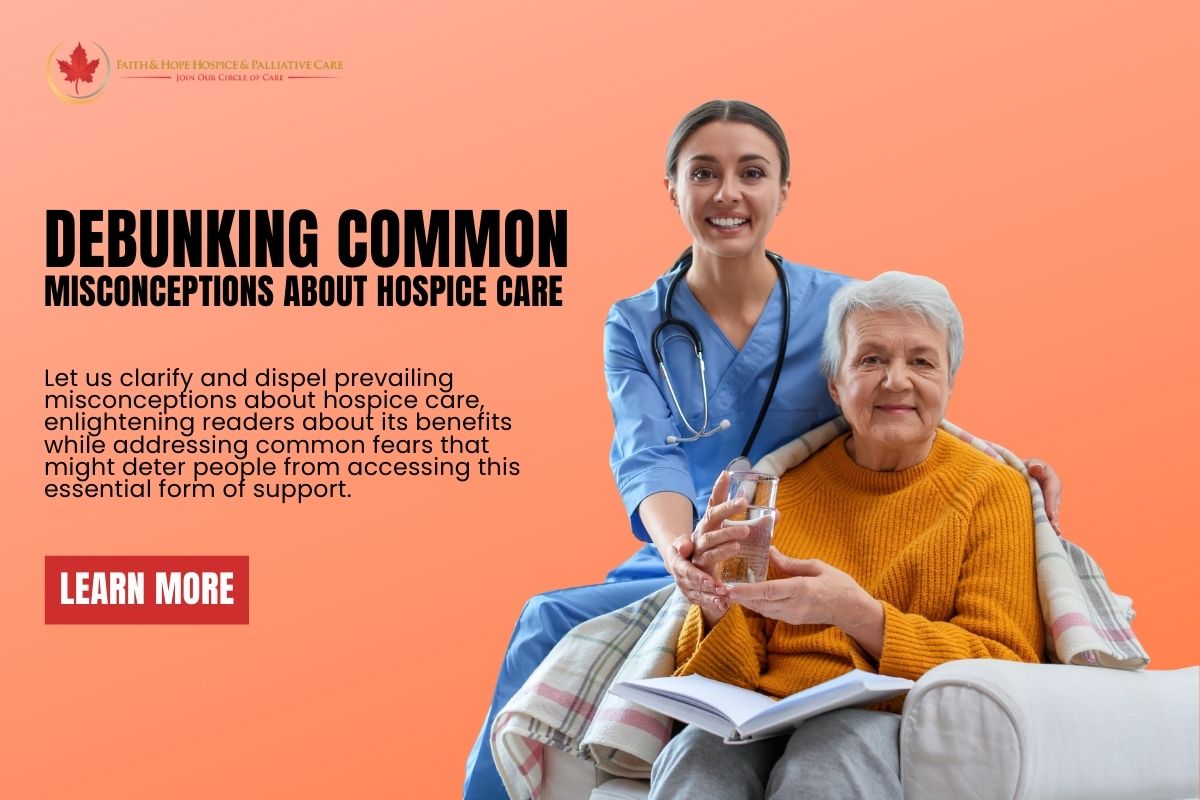
- By: administrator
- Blog
- No Comments
Los Angeles hospice care is an essential and compassionate form of medical support for individuals facing life-limiting illnesses. Despite its critical role in improving patients’ quality of life, there are several misconceptions surrounding hospice care. These misunderstandings often prevent individuals from seeking this specialized care when they need it the most. In this blog, we will debunk some of the most prevalent misconceptions about hospice care, shedding light on the reality of its benefits and dispelling any fears or uncertainties.

Misconception 1: Hospice Care Means Giving Up Hope
One of the most pervasive misconceptions about hospice care is that it signifies giving up on life and hope. In reality, Los Angeles hospice care focuses on enhancing the patient’s quality of life, promoting comfort, and managing pain and symptoms. It shifts the focus from aggressive treatments aimed at curing the illness to providing support, emotional care, and symptom management. Hospice care does not eliminate hope; instead, it emphasizes a different kind of hope — one that centers around making the most of the time left, cherishing relationships, and finding peace and closure.
Misconception 2: Hospice Care is Only for the Final Days
Another common misconception is that hospice care is only suitable for those in the last moments of life. In truth, hospice care can be accessed much earlier in the illness trajectory. Starting hospice care earlier allows patients and their families to receive comprehensive support, establish meaningful connections with the care team, and make informed decisions about end-of-life choices.
Misconception 3: Hospice Care is Expensive
The belief that hospice care is costly deters many individuals from seeking this vital service. On the contrary, hospice care is covered by Medicare, Medicaid, and most private insurance plans in the United States. This means that eligible patients can access hospice services without worrying about financial strain. Additionally, hospice care often reduces the overall healthcare expenses, as it focuses on managing symptoms and avoiding unnecessary hospitalizations or interventions.
Misconception 4: Hospice Care is Only for Cancer Patients
While cancer patients do use our hospice in Pasadena, this specialized support is not exclusive to them. Hospice care is available for individuals with various life-limiting conditions, including but not limited to heart disease, chronic obstructive pulmonary disease (COPD), dementia, and neurodegenerative disorders. Hospice teams tailor their care to meet the unique needs and preferences of each patient, regardless of the underlying diagnosis.
Misconception 5: Hospice Care is Provided Only in Hospitals
Many people associate hospice care with a hospital setting, but in reality, the majority of hospice services are offered in the patient’s home, whether that be a house, assisted living, or skilled nursing facility. Home-based hospice care allows patients to remain in the comfort and familiarity of their own surroundings, promoting emotional well-being and peace during their final stages of life.
Understanding the Role of the Hospice Care Team
One factor that sets hospice care apart is its holistic approach. The hospice care team in Los Angeles consists of a group of specialized professionals that cater to various needs of the patient:
- Medical Director: Oversees the patient’s care plan, ensuring it aligns with their unique medical needs.
- Nurses: They manage pain and symptoms, ensuring that the patient is as comfortable as possible.
- Social Workers: Provide emotional and psychosocial support to the patients and their families. They also assist with any necessary paperwork and logistical matters.
- Chaplains: For those who desire spiritual guidance, chaplains are there to offer support irrespective of religious beliefs.
- Bereavement Specialists: Offer counseling and support for families coping with grief after the passing of a loved one.
- Volunteers: Often act as companions, offering a listening ear or helping with daily activities.
- Therapists: Depending on the hospice, services like music or art therapy may be available, offering unique ways for patients to express their feelings and emotions.
The Emotional Benefits of Hospice Care
Besides the medical benefits of hospice care, there are profound emotional and psychological advantages. The holistic approach taken by hospice care ensures that patients and their families receive the emotional support they require. Regular interactions with therapists, counselors, and volunteers ensure that the patient doesn’t feel alone or isolated. Family members also benefit as they receive guidance on how to cope with the impending loss of a loved one and the emotions that arise during this challenging time.
Cultural Sensitivity in Hospice Care
Los Angeles, being a melting pot of diverse cultures, requires hospice care that respects and understands these differences. A culturally sensitive approach ensures that the customs, beliefs, and values of each patient and their family are taken into account. Whether it’s dietary preferences, spiritual rituals, or communication styles, hospice care in Los Angeles prides itself on being inclusive and accommodating.
Customizing Care to Individual Needs
Each patient is unique, and so are their needs. Los Angeles hospice care ensures that each patient receives a care plan tailored to their specific needs. This might involve customized pain management techniques, specific therapies, or even spiritual counseling as per the patient’s wishes.
Conclusion
Debunking the common misconceptions surrounding Los Angeles hospice care is crucial to ensure patients and their loved ones can access the support they need during challenging times. Hospice care is not about abandoning hope or giving up on life; it is about embracing compassionate care and comfort while maintaining dignity and respect. By understanding the reality of hospice care, we can make educated decisions about end-of-life care and cherish the moments with our supportive network when they need it the most. If you or a loved one are facing a life-limiting illness, do not hesitate to consider hospice care as a source of support and comfort throughout the journey.
Call us at (877) 797-1977 or email info@faithandhopehospice.com to connect with our Faith and Hope Hospice team today.
View the related article here: https://faithandhopehospice.com/misconceptions-versus-truths-about-hospice-in-los-angeles-ca/
